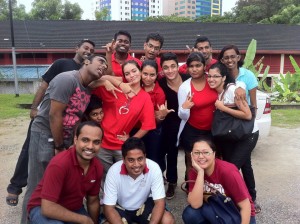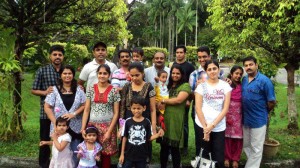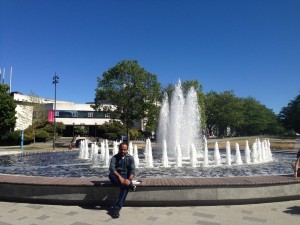As a novice to the internet marketing space, I find it really sensible to hear from experts of the industry FIRST before I read and digest everything from the scratch. I want to get the “feel” of e-marketing from the experienced people in this space. Upon request, Todd Mumford from Riverbed marketing gracefully agreed to spend 30 minutes of his valuable time to answer some of my questions. Todd is a search specialist, SEO consultant and online marketer with over 10 years of experience helping businesses to develop and execute on positive growth search revenue channels, with a focus on SMBs and Startups.
Excerpts from the interview with Todd conducted on Friday Nov 7th 2014 at 4 PM.

1. What are the current trends in the field of internet marketing?
The current trend in e-marketing is leaning towards inbound marketing as compared to traditional outbound marketing. Companies do not start sales process very early. Alongside, customers prefer finding and researching companies out of curiosity. They are trained to research and find by themselves. At the same time, customers don’t like encroachment into their space without permission; so outbound marketing is not the favorite in the current scenario.
E.g. – Customers using ad blockers. Customers want to stop ads from interrupting their browsing behavior because ads follow the interruptive marketing strategy and hence annoying.
Inbound marketing, on the other hand, helps customers with wide forms of education and information and entertainment. It is a constant, ready way to market the product. It is a way to put your brand out there. There are many marketers in the space who are taking advantage of it. Inbound marketing pulls the customers into the market, a good tool to build the customer’s trust and makes marketing more closely to sales.
2. Who are the typical customers of internet marketing firms?
All firms ranging from professional services to auto industry to tech. industry. Each company wants to make their online presence much relevant. They use internet marketing tools to edit and monitor transactions as opposed to monetary or commercial benefits.
3. Can you compare & contrast between online & offline marketing space?
Outbound marketing was a trend for long time in online marketing space. One example of online outbound marketing is the promotional emails. It’s the education piece [of the customer] that determines what realm to target for; online or offline. For e.g.:- auto industry uses large imagery banners to build brand awareness [which is offline & outbound]. There have been some changes to it. Now the buyer does e-search on which is right brand that meets his/her needs; which makes it relevant for the availability of powerful content in internet.
4. What are the relevant internet marketing needs sought in the market today?
The hot cakes in the market are SEO, content development, social media & marketing consulting. The SEO mostly involves identifying the key aspects of the customer’s brand, the technicalities involved, identifying natural inbound links, potentially dangerous links etc. The content development is another key area which is significantly relevant. We work with clients [developers & mentors] to identify long term content for their site/ blog posts, setup content calendars for inbound visits and to build up content strategy.
5. How do you use the Hub and Bridge Influencers in online marketing?
We first identify the influencers whose social media contributions are typically aligned with the product or service of our client, we’ll have our clients follow them in social media, comment the content they put in, we recommend our client to involve influencers in the process of discovering new products/services, we recommend to co-brand blog posts/reports/ surveys between our clients and influencers, put in meaningful content, engage in interviewing the influencers etc.
6. Can u explain briefly about Landing page conversion, AB split testing etc.? These terminologies are relatively new to me.
Landing page conversion: Creating customized landing pages on a website, identify sections in the website , identify the ones that benefit to the end users so that user takes action in a certain way (for e.g.:- download a particular e-book)
AB Split testing: It is a tool used for landing page optimization. It is based on the approach of multivariate testing. A page goes through lots of variations/revisions and finally that version is retained which has the maximum performance and which impacts marketing in a positive way.
7. Can you talk about some of the ethical aspects of e-marketing? Like talk about Canadian spam law, marketing to children etc.
I appreciate the anti-spam law in Canada. The compliance is important to prevent spammers. It does not add lot of value to get lot of email addresses and bombard customer’s inbox with lot of promotional emails. On the other hand, it makes lot more sense to put in the right content in the website that addresses customer needs thereby catch customer attention while they do search. This will make customer really positive about the website and can add lot of value to the firm’s brand. These days, companies do not want to work with spamming agencies. I think the anti-spamming law will make good impacts in the near future.
8. What do you think as the future of internet marketing? What are the opportunities and challenges?
One of the future of internet marketing is the voice activated search (Siri; for Example) .These days companies move away from traditional marketing norms; everyone needs to be publishers and generate right content so to uphold their brand and survive in the market today. Online marketing should thrive towards developing content that’s more compatible with voice search.
The biggest challenge with internet marketing is its impact on small & medium business .They will only get a smaller portion of the pie. Smaller business will find it expensive to find budget to generate the right website content that can catch people’s attention.





